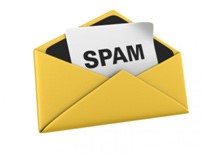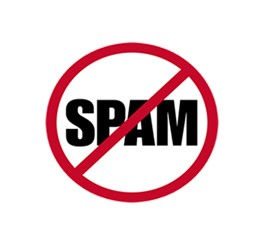5 Simple Ways You Can Fight Spam and Protect Yourself
Published on 23 Oct 2012
by GOsafeonline
Electronic mail or Email is one of the easiest and most convenient channels where we can transfer information and share data with others. However, it is also common to receive information or emails that contain malicious attachments or dubious messages. Some email service providers filter and mark such dubious emails with the word “SPAM” in the subject of the email, indicating to the recipient that the email is either a junk email or unsolicited email with dubious content sent to numerous recipients by the sender. Clicking on links in such spam email may direct the recipient to phishing web sites or sites that download malware to the victim’s computer.
It is not surprising that most of us have encountered numerous spam emails in our inbox and believe it or not, your behavior online contributes to the spam messages that you receive. Here are five simple ways to fight spam and to protect yourself online:

- Never give out or post your email address publicly
You should remember that everyone can easily access the Internet. That means, spammers are also lurking on the Internet and are constantly seeking available email addresses which they will send spam emails to. Posting your email address publicly allows others to send spam emails to you, or worse, hack your account if you are using a weak password. - Think before you click
There might be instances where your email service providers’ automated email filter mistakenly mark legitimate emails as spam email due to its content (e.g. the email contains a hyperlink). However, in most cases, emails marked as “SPAM” or redirected to the spam folder of your mailbox are sent by spammers. Subject of spam messages usually include offer of cheap prescription drugs, advertisements on new medicines, and status of packages from shipping companies. Make sure that you scrutinize the content of spam emails before opening any attachments (even if it looks like an innocent text or image file) or clicking on hyperlinks. Refrain from downloading contents blocked by your email service providers in such emails too. - Do not reply to spam messages
Almost all spam messages are malicious emails sent by unknown sources. These sources could be hackers who aim to hack into the computers of their victims. Never respond to spam messages because through this, the spammer will know that the email address is active and thus, it increases the chance of your email to be constantly targeted by the spammer. - Download spam filtering tools and anti-virus software
Spam filtering tools and anti-virus software can help to scan the emails that you received for malware. If the emails that you received contain malware, the malicious content would be quarantined and you would be prevented from opening it. This helps to alleviate the chance of emails containing malware from infecting your computer. As such, do select spam filtering tools and anti-virus software with such features to reduce your woes of having to decipher email contents. - Avoid using your personal or business email address
Do not use your personal or business email address when registering in any online contest or service such as applications, deal updates, etc. Many spammers watch these groups or emailing lists to harvest new email addresses.

There are many ways to avoid being a victim of spam messages. But the most important thing is to be cautious in opening your emails. Always make sure that the emails that you open are from trusted sources and do not look dubious. If you received any of such suspicious emails, you may forward them to the Singapore Computer Incident Response Team ( SingCERT) for their investigation.